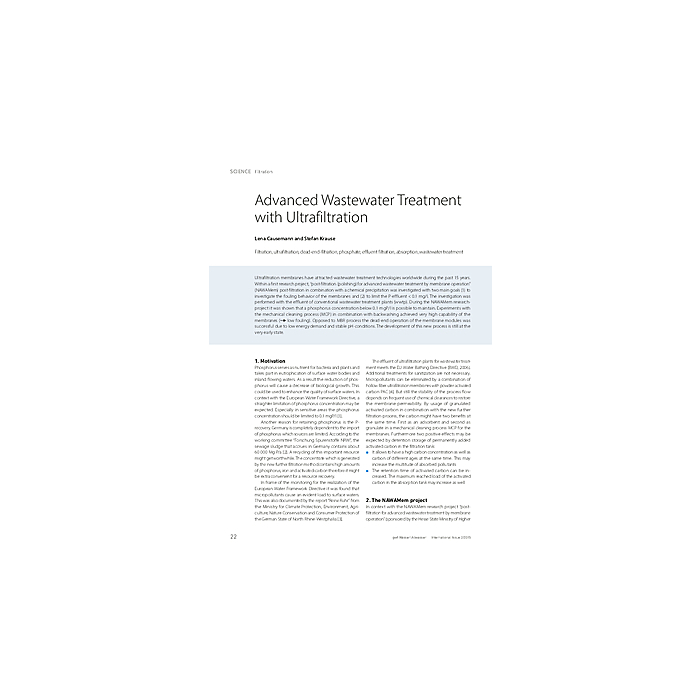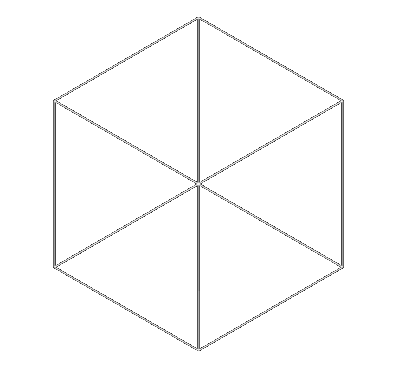Advanced Wastewater Treatment with Ultrafiltration
4,90 €
Auf Lager
Artikelnummer
05399_2015_SP2_02
Ultrafiltration membranes have attracted wastewater treatment technologies worldwide during the past 15 years. Within a first research project, “post-filtration (polishing) for advanced wastewater treatment by membrane operation” (NAWAMem) post-filtration in combination with a chemical precipitation was investigated with two main goals (1) to investigate the fouling behavior of the membranes and (2) to limit the P-effluent < 0.1 mg/l. The investigation was performed with the effluent of conventional wastewater treatment plants (wwtp). During the NAWAMem research-project it was shown that a phosphorus concentration below 0.1 mgP/l is possible to maintain. Experiments with the mechanical cleaning process (MCP) in combination with backwashing achieved very high capability of the membranes ( —› low fouling). Opposed to MBR process the dead-end operation of the membrane modules was successful due to low energy demand and stable pH-conditions. The development of this new process is still at the very early state.
| Autoren | Lena Causemann / Stefan Krause |
|---|---|
| Erscheinungsdatum | 01.01.1970 |
| Format | |
| Zeitschrift | gwf - Wasser|Abwasser - Special 2 2015 |
| Verlag | DIV Deutscher Industrieverlag GmbH |
| Titel | Advanced Wastewater Treatment with Ultrafiltration |
| Beschreibung | Ultrafiltration membranes have attracted wastewater treatment technologies worldwide during the past 15 years. Within a first research project, “post-filtration (polishing) for advanced wastewater treatment by membrane operation” (NAWAMem) post-filtration in combination with a chemical precipitation was investigated with two main goals (1) to investigate the fouling behavior of the membranes and (2) to limit the P-effluent < 0.1 mg/l. The investigation was performed with the effluent of conventional wastewater treatment plants (wwtp). During the NAWAMem research-project it was shown that a phosphorus concentration below 0.1 mgP/l is possible to maintain. Experiments with the mechanical cleaning process (MCP) in combination with backwashing achieved very high capability of the membranes ( —› low fouling). Opposed to MBR process the dead-end operation of the membrane modules was successful due to low energy demand and stable pH-conditions. The development of this new process is still at the very early state. |
Eigene Bewertung schreiben


